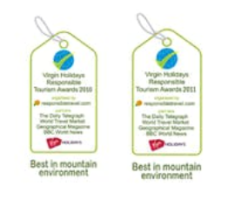Trekking in Nepal in February
February is one of the coldest months in Nepal, even though it is the end of winter. The Arabian Sea or The Hindu Kush’s Westerly disturbance region can bring rain in the low to middle hills and snowfall in the higher altitude areas. Interestingly it snows more in February than in December and January. Most people do not come to trek in Nepal this month, thinking it will be super cold and most of the country will be blanketed in snow. It is better to do treks in the lower elevations such as the Ghorepani trek, Everest Treks to Namche, Tengboche, Pangboche, or Short treks near Pokhara and Kathmandu. If possible, avoid the Annapurna Base camp trek as part of the trail becomes avalanche prone. However, you can prevent the dangers if you start early in the morning while fresh snow is still frozen rather than when the sun begins to melt the snow/ice and gravity causes an avalanche. Also, avoid doing Annapurna Circuit, Tilicho Lake, and Manaslu Circuit treks, as the passes can be covered by snow, and the trail can be icy. Having said this, Europe and North America would be much colder than Nepal during February.
It always pays to invest in the right equipment such as a suitable down jacket, sleeping bag, a couple of layers of fleece, the right thermal underwear, thick hiking socks, gloves, trekking pants, warm hats, and perhaps even walking crampons, to name a few essential gears to invest in. It is always better to have more than less.
It is good to dress up in layers that you can ‘peel’ one at a time when you start to warm/heat up as you begin trekking.
Benefits of Trekking in Nepal Himalaya during February.
Most people think winters in Nepal are freezing, and some might even imagine most of the country is covered in snow. This couldn’t be further from the truth. The clouds begin to form in the latter part of the day, and it can start raining at the lower altitude and snowing in the higher elevations during the late afternoon or evening. This is a good thing as it can clear the clouds and clear the clouds for excellent mountain views the following day.
- The past two winters have been clear like they used to be some 20-25 years ago.
- There will still be fewer trekkers on the trail and in the lodges if you go trekking during February to the popular trekking areas where there are lodges.
- You will be warm while hiking in the sunny weather – perhaps even sweat on the uphill climbs.
- You could be the only trekker in the lodge.
- For the same reason, the wifi works better in the hostels as fewer people log in.
- You can use the internet better for weather forecasts and temperatures.
- There will be fewer people queuing for hot showers.
- Despite winter, don’t be surprised by the greenery or flowers in the lower altitudes.
- The closed lodge owners start returning from warmer places such as Kathmandu, Pokhara, or Chitwan for the winter season.
Can I do a high-altitude trek in Nepal during winter?
You can undoubtedly do a high-altitude trek in Nepal during winter. The better time to do a high-altitude trek during winter is in December and January. We do receive some precipitation for a few days every month. We receive more massive snowfalls during February and March rather than in the middle of winter.
Dangers/Inconveniences of trekking in Nepal during winter.
- Most of the lodges have started opening again.
- Not all food on the menu will be available.
- The toilet floors might freeze from water/urine spillage in the higher altitude treks. If possible, try to find toilets inside the main building; better still, ask if they have a room with an attached bathroom. Again, minimize spillage in the bathroom to avoid icing.
- Toilets could be frozen/blocked due to the cold at higher altitudes.
- The paths through villages could be icy because the villagers have to let the public tap run all the time to prevent the pipe from breaking from freezing.
- The trail could be icy, and dirt can camouflage the ice.
- There could be very windy conditions in the higher elevations, be prepared.
- You will likely face rain in the lower elevations and snow in the higher mountains during February.
- You might encounter rain/hail/snow storms due to the Western disturbances from the Arabian Sea or the Hindu Kush range. You must be careful of flying debris such as signboards, zinc roofs, falling branches, or even uprooting trees.
Update: February 2022 experienced a decent amount of rain and snow, depending on the altitude.
February 2019 has received good rain and snowfall up to the third week; the precipitation has been more than usual. Nepal experienced heavy snow and rainfall during the last four days of February 2019. Kathmandu valley and the surrounding hills experienced snowfall twice a month. On the 26th of February alone, it received 90mm of rain – 5 times the average monthly rainfall.
Check out our Trekking packages for Nepal, Bhutan, India, and Tibet.
















